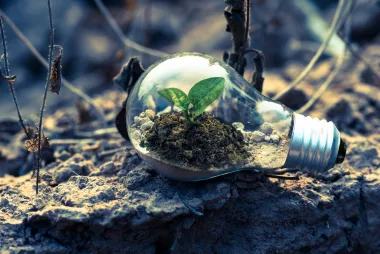Last Updated on January 10, 2024 by Ecologica Life
When I was a kid, I remember learning that landfills were overflowing. I was taught that we were throwing away so much garbage that we were digging holes to put it in the ground. I also remember being taught that these holes were overflowing and something must be done about it. I am no longer a child, and I was wondering if landfills are still overflowing.
In this article we look at what the latest data and statistics (as of 2023) tell us about landfills around the world. Are they still overflowing? And what is and has been done to remedy the situation?
Table of Contents
What is a Landfill?
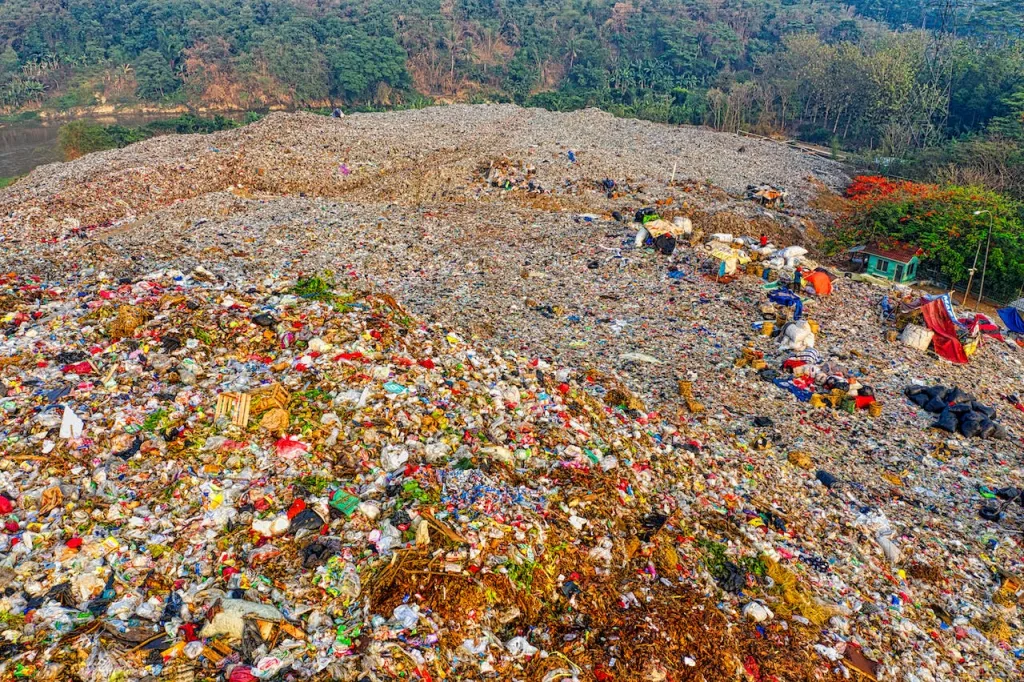
A landfill, also known as a tip, dump or municipal waste site, is the place where most household waste goes. Landfills usually bury this rubbish underground (hence the name, landfill). Once the waste is buried, the land can be sold or used for other purposes.
People have always buried their waste since forever. The only thing that has changed is the amount and type of waste that we produce.
Global Waste Statistics
Worldwide, we produce around 2 billion tonnes of municipal solid waste every year. That’s almost 4000 tonnes of municipal waste produced every minute (do the math yourself!).
The chart below shows the amount of municipal waste produced by different regions of the world in 2016, as well as projections for 2030 and 2050. East Asia and the Pacific has the worst municipal waste generation now and potentially in the future too. Sub-Saharan Africa and South Asia are projected to increase their waste production massively too.
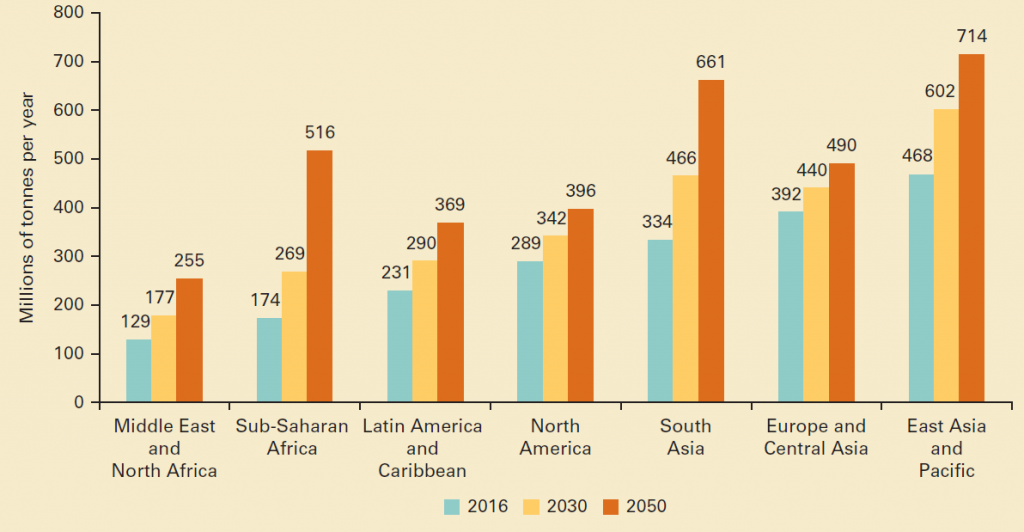
Let us look at the world waste statistics by country. The country that generates the most waste worldwide is China. In 2018, China accounted for 15% of world’s waste. However, it is also important to look at the waste generated per capita.
The graph below shows the waste generated per capita. Waste per capita means in relation to each person in the country. Unfortunately, we couldn’t find any data on China’s waste that was more recent than 2014. The 2014 data suggests that waste generation in China is 653g per capita (note that this is in g and the graph below is in kg).
Austria, the United States and Norway were the worst offenders according to the latest data.

Find more statistics at Statista
It is one thing to produce a lot of waste. But it is also important to think about the disposal of waste. A country that produces a lot of waste but manages it effectively is less polluting than one that produces less but does not manage its waste effectively.
The Global Waste Index analyses how members of the Organisation for Economic Co-operation and Development (OECD) generate and recycle their waste.
The latest index is from 2022. The results show that of the 38 ranked members, the countries that manage their waste best are South Korea, Denmark, and Germany. It should be noted that this list assumes that countries that incinerate waste are greener than those using landfills. However, the eco-friendliness of waste incineration is a matter of debate.1-5
That being said, here is the ranking of countries that manage their waste better.
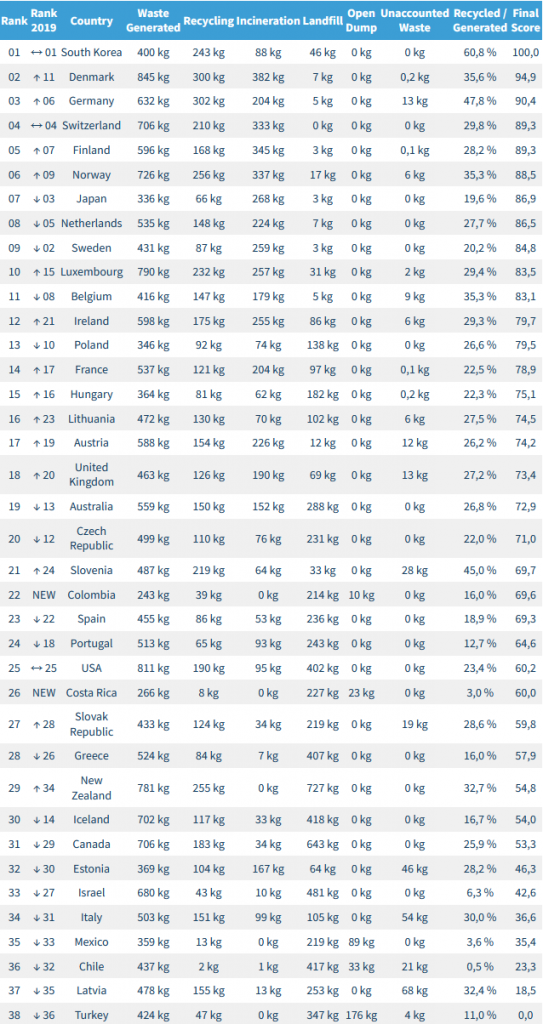
Several countries, including the top three, pride themselves on advanced recycling facilities. Germany was cited as being the world champion in recycling.
- South Korea generated an average of 400 kg of waste per person. Half of this was recycled, 88kg/person was incinerated, and 46/person was landfilled.
- Denmark generates 845kg/person (a lot!). Of this 30% was recycled, 382kg is incinerated and 7kg/person is landfilled.
- Germany generated 630 kg/person and recycled almost half of this, incinerated 30% and landfilled 4kg/person.
Unfortunately, the data for the United States has not been updated since the 2019 index was published. At that time, the country produced the most waste per person. On average, each person produced around 800kg of waste in a year. Despite making up only 4% of the world’s population, the US produces 12% of the world’s municipal waste.
Eurostat waste statistics
Eurostat is an EU initiative that provides statistics about the EU. Of interest to us, they provide waste statistics for Europe in 2006 and 2021. This will help us answer our initial question of whether landfills are getting better or worse.

The graph shows a slight increase in waste generation from 513 to 530 kg per person between 2006 and 2021. However, if we look at individual EU Member States, we get a mixed message. Some countries, such as Belgium, Denmark, and Norway, have significantly increased their waste generation. Meanwhile, countries such as Romania, Spain and the UK have significantly reduced their municipal waste.
Somewhat encouragingly, 49% of EU’s municipal waste was recycled in 2021 (although there is much room for improvement!). The EU is moving away from landfilling and towards incineration, recycling, and composting, as shown in the table. We will evaluate the debate of incinerating waste in another article. Nevertheless, this data is encouraging.

Are Landfills Improving?
So, returning to our original question, are we reducing the number of landfills or is the situation getting worse?
The landfill situation is improving… Depending on where you are in the world. The EU, for example, is committed to reducing waste sent to landfill and has been successful so far. The total amount of waste sent to landfill decreased by 27.5% from 79 million tonnes to 54 million tonnes between 2010 and 2020.
That being said, some European countries are doing better than others. The EU Landfill Directive requires countries to reduce landfill waste to 10% or less of total municipal waste by 2035. In 2020, 9 Member States and 2 non-EU countries achieved this level (Austria, Belgium, Denmark, Finland, Germany, Luxembourg, the Netherlands, Norway, Slovenia, Sweden, and Switzerland). Several of these countries incinerate a considerable amount of their waste, which needs to be considered.
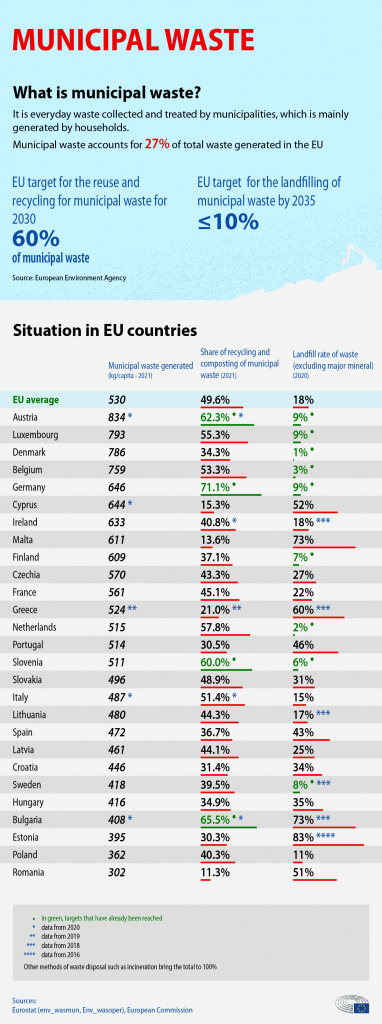
Europe’s Zero Pollution Plan: In progress
In other parts of the world, such as the US, waste management is not going as well. One of the key differences is that the EU incentivises packaging companies to make sure their products are recyclable, otherwise they will have to pay for disposal. In the US, the taxpayer pays for this, so there is less incentive to build recycling into the packaging design.
The US landfills 49% of its waste (remember that it produced 12% of the world’s municipal waste in 2019!). Recycling and composting together account for less than 35% of it. While recycling and composting have been steadily increasing, so has the amount of waste landfilled. The US definitely has room for improvement.
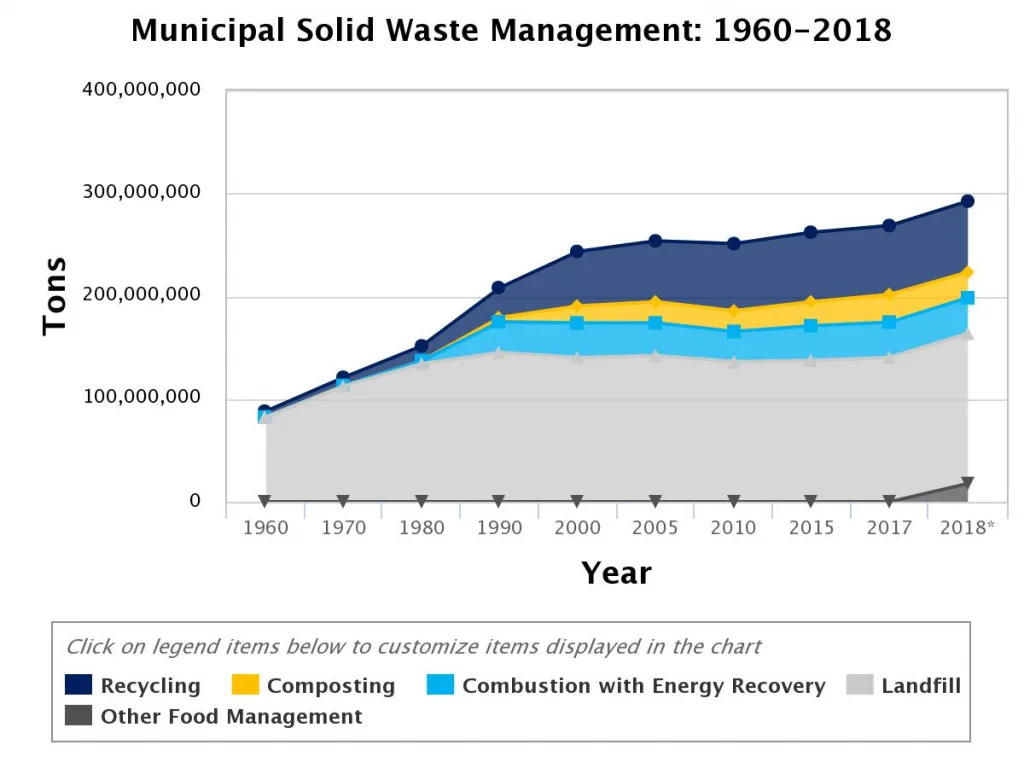
As we can see from the table below. The US is fairly good and recycling and composting paper, yard trimmings and lead-acid batteries. The country should definitely work on improving its recycling schemes for glass and plastics.

Why Are Landfills a Problem?
Waste contains many raw materials that can be recycled and reused. Aside from this, poorly managed landfills can have negative impacts on the environment and on human health. Many experts have reported that communities living near a poorly managed landfill have a higher risk of health problems. The liquid that leaches out of a landfill (leachate) can also contaminate nearby soil and water.
Air pollution is another major problem associated with landfills. Every day, landfills produce millions of cubic feet of methane gas, a natural, invisible result of the decomposition of organic matter. Landfills are sophisticated systems and usually try to limit the amount of gas released, but this can be difficult to do while they are still being filled.
In the US, landfills are the third largest source of human-related methane emissions. The EU isn’t far behind, with a quarter of its methane emissions coming from landfills in 2022. However, the EU plans to reduce this by 37% by 2030 in what’s known as the EU Methane Action Plan.
Landfill gas production typically peaks after seven years, but landfills can continue to produce gas for more than 50 years. We won’t discuss the life cycle of a landfill here, but it’s quite interesting.
About half of landfill gas is methane and half is carbon dioxide (CO2). While researchers have long focused on the impact of CO2 emissions on climate change, there is a growing awareness of the impact of methane.
The Impact of Landfill Gas Emissions
Ideally, landfill sites would like to capture methane as it can be used for energy. Problems arise if it escapes into the air before this can happen. It can be difficult to capture the methane if you are adding more waste to the landfill every day.
Methane, like CO2, is a greenhouse gas. Greenhouse gases warm the atmosphere by trapping solar energy. Methane gas lasts around 12 years in the atmosphere, compared to CO2’s lifespan of more than 100 years.
However, when the gases are compared over a 20-year period, methane traps 86 times more radiation, throughout that time. Methane is a major short-term contributor to climate change. 2020 saw the largest increase in atmospheric methane concentrations since records began in 1983.
Focusing on reducing methane can have a significant and quick impact on climate change.
Solutions Going Forward
Before we look at what individual can do to help. There are numerous strategies and actions that communities, organisations, and governments can take to reduce the amount of amount of waste going to landfills, mitigate the effects of landfill gas emissions, and promote a circular economy.
1. Waste Reduction and Diversion Initiatives
- Extended Producer Responsibility (EPR): This policy approach makes producers responsible for the end-of-life management of their products. This can incentivise producers to design products that are more durable, reusable, or recyclable.
- Composting Programmes: Establish community or curb side composting programmes to divert organic waste from landfills.
- Recycling Programmes: Strengthen recycling facilities and increase waste collection. Create awareness programmes to increase participation rates.
2. Research and Development
- Innovation Grants: Provide grants to start-ups and institutions researching sustainable waste management solutions.
- Materials Science Research: Support research into the development of sustainable, biodegradable materials as alternatives to plastics.
3. Policy and Regulation
- Incentives for Green Businesses: Offer tax breaks or other incentives to businesses that practice green and sustainable waste management.
This list is by no means exhaustive, but these are ways that we believe could be effective in addressing waste management issues. This is particularly true of EPR. I believe it is likely that EPR is one of the key reasons for the differences in waste management issues between the EU and US.
What Can I do to Help?
- Don’t purchase single use beverage cups, plastic bottles, straws etc. Use reusable ones. Plastic waste is some of the most contaminating and microplastics are everywhere.
- Buy less. The less you buy, the less waste you produce and the more money you save.
- Reuse and repair. Has the tongue of your shoe fallen down? Consider gluing it back on.
- Buy and sell things at the second-hand markets.
- Natural cleaning products such as vinegar and baking soda are much better for the environment.
- Recycle and separate waste materials.
- Compost (if you can).
- Encourage others to live sustainably.
Conclusion
In conclusion. Landfill management is improving in many parts of the world, such as the EU, but there is still room for improvement in other countries. Developing countries will soon be producing much more waste and will need to invest in their infrastructure to cope.
Landfills are a major source of methane emissions. If we can limit methane emissions, we can make a significant difference on the climate change front, in the short term. Finally, there are many actions we can all take to improve waste management.




